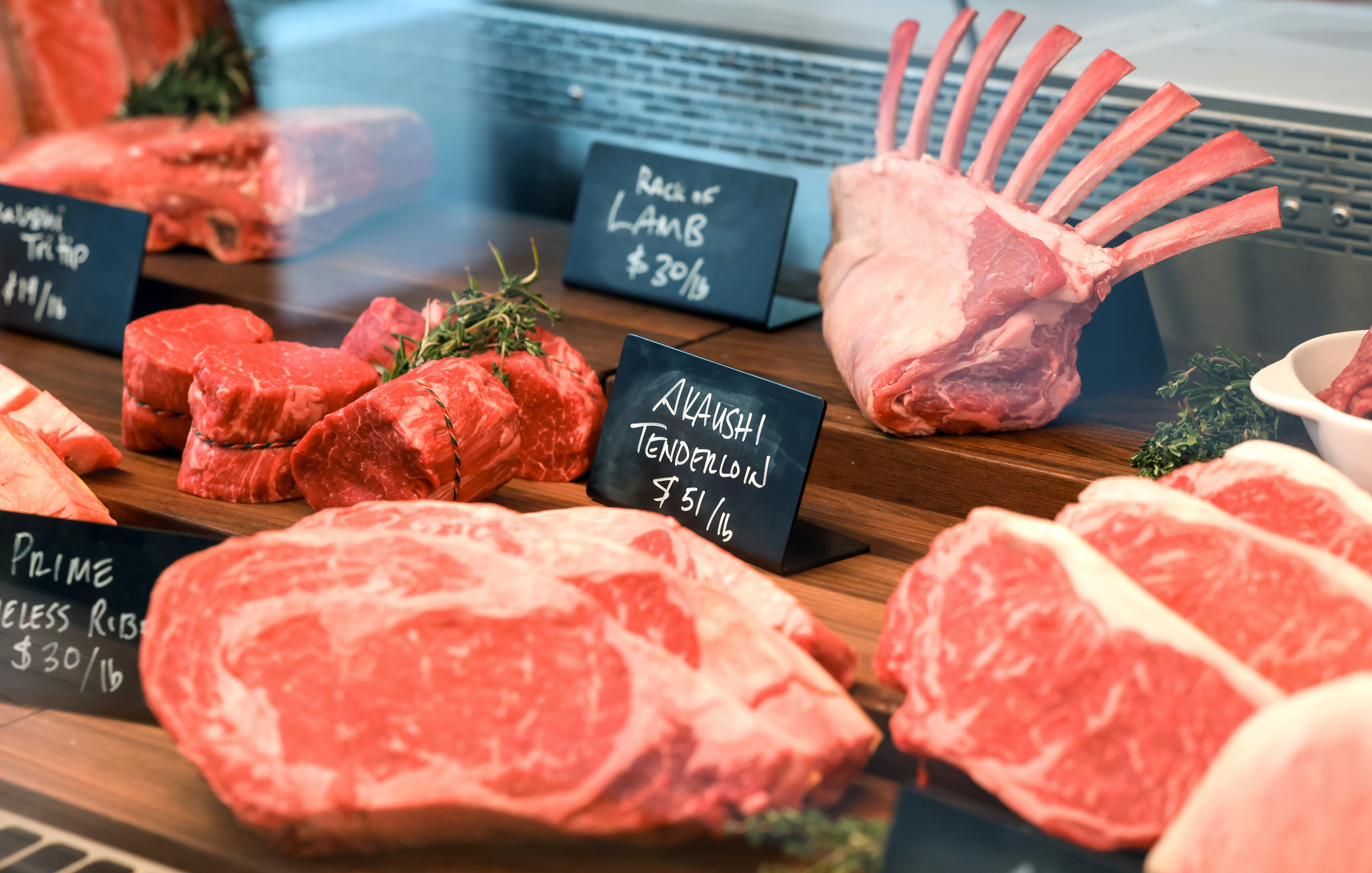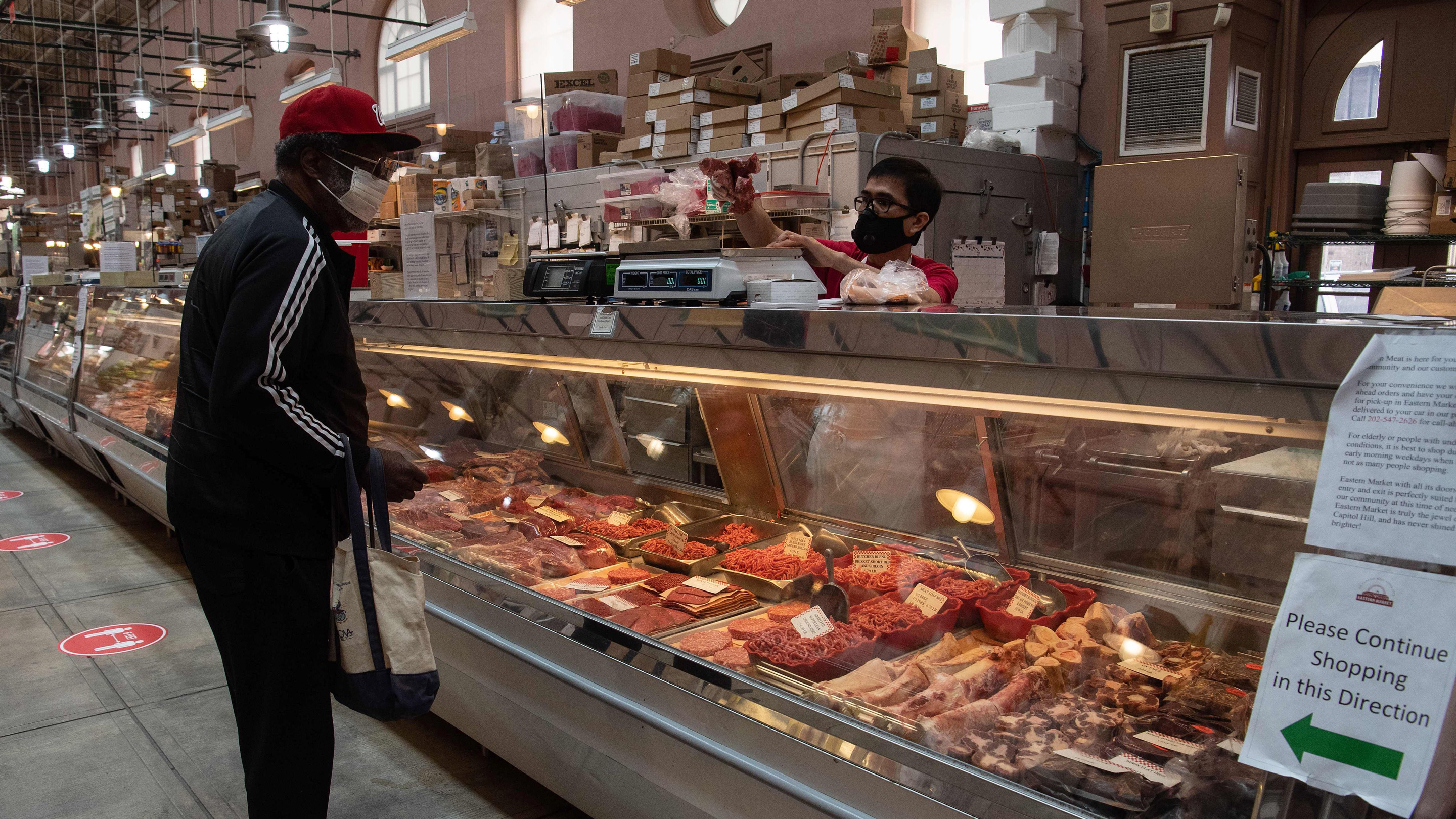Leading Reasons to Shop at Bagley Farms Meat Market Edwardsville IL for Costs Meats
Leading Reasons to Shop at Bagley Farms Meat Market Edwardsville IL for Costs Meats
Blog Article
Discover the Art of the Butcher's Cut in a Modern Meat Market
In the ever-evolving landscape of modern meat markets, the butcher's cut has actually transcended its standard roots, merging age-old workmanship with contemporary practices. Today's butchers are not simply processors of meat; they are well-informed artisans who highlight sustainability and honest sourcing. Their knowledge in selecting and preparing cuts tailored to certain culinary requirements supplies an exceptional eating experience. What genuinely establishes the modern-day butcher apart is their capability to forge a deeper connection in between customers and the origins of their meat. Just how do these masters balance practice with technology, and what implications does this have for the future of meat intake?
Advancement of Butchery Techniques
The advancement of butchery techniques shows a rich tapestry of technology and adjustment driven by innovations in innovation, changes in consumer demand, and a deeper understanding of meat science. Historically, butchery was a craft gave through generations, with methods sharpened over centuries to take full advantage of return and taste. The commercial transformation ushered in mechanization, transforming typical methods and allowing large-scale handling.
The mid-20th century saw butchery methods additionally refined by clinical understandings into muscle mass biology and meat aging, boosting both tenderness and taste. Developments like vacuum cleaner packaging and refrigeration prolonged item shelf-life, enabling butchers to branch out offerings and boost quality assurance. This period additionally noted the surge of specialized equipment, such as band saws and meat slicers, which enhanced accuracy and effectiveness in meat handling.

The 21st century has introduced electronic modern technology right into the butchery world. Computerized systems currently assist in tracking animal provenance and maximizing cuts to satisfy particular consumer preferences. Additionally, a rebirth in artisanal butchery has actually emerged, mixing typical skills with modern-day understanding to deal with consumers looking for moral and lasting meat choices. This evolution highlights a dynamic interaction between tradition and advancement, meeting modern needs while maintaining the craft's heritage.
Understanding Meat Cuts
Understanding the complexities of meat cuts is vital for both butchers and customers looking for top quality and value. Each cut comes from a different component of the pet, imparting distinct flavors, appearances, and food preparation techniques - bagley farms meat market edwardsville il. Mastery of these distinctions not just boosts cooking experiences but also makes best use of the utility of each carcass. For butchers, specific cuts mirror ability and respect for the craft, making sure very little waste and optimal return.

Recognizing muscle composition is critical; muscle mass made use of more regularly by the animal tend to be tougher and are best fit for slow cooking techniques, while less-used muscular tissues, like those discovered in the loin, are extra tender and ideal for barbecuing or roasting. Knowledge with these differences encourages customers to make informed choices, boosting their cooking endeavors.
Choosing High Quality Meat
Choosing the best meat includes more than simply picking a visually appealing piece have a peek at this site from the screen. The art of picking high quality meat calls for a discerning eye and expertise of certain qualities that symbolize quality and excellence.
Secondly, think about the marbling, which refers to the white streaks of fat within the muscle. Correct marbling is a vital indicator of inflammation and taste, as it thaws during cooking, boosting the meat's juiciness. Remember, greater marbling frequently correlates with premium top quality cuts, such as USDA Prime.
Structure is one more important aspect; meat should really feel solid to the touch, not slimed or extremely soft. In addition, be mindful of the fragrance. Fresh meat needs to have a tidy, neutral smell, without any kind of sour or repulsive odors.
Coupling Cuts With Cooking Techniques

On the other hand, harder cuts like brisket and chuck roast are rich in collagen, which breaks down into gelatin when cooked slowly. These cuts are excellent for braising or slow-moving roasting, permitting the meat to soften over time and develop deep, complicated tastes. Likewise, cuts such as short ribs and pork shoulder prosper with slow-cooking methods, where expanded cooking times change their robust appearances into succulent meals.
Lamb shanks and oxtail, which need extended cooking to soften, are perfect candidates for stewing or sluggish simmering. These methods coax out rich, passionate tastes while keeping wetness. By recognizing the distinct features of each cut, cooks and home chefs alike can boost their culinary creations, making certain each recipe is both satisfying and remarkable.
The Butcher's Role Today
Browsing the progressing landscape of the contemporary meat market, great post to read the butcher's duty today prolongs past simple prep work of cuts. Contemporary butchers are culinary craftsmens, educators, and advocates for sustainable techniques. They bridge the space between the ranch and the fork by making certain honest sourcing, recognizing pet husbandry, and prioritizing openness see this in the supply chain. This shift shows the growing consumer need for high quality over amount, where provenance and animal welfare are critical.
Along with crafting exact cuts, butchers currently engage directly with clients, supplying cooking recommendations and customizing choices to fit specific requirements and choices. Their know-how in meat aging, marbling, and taste accounts encourages customers to make informed choices, enhancing their cooking experiences. This individualized service exhibits the butcher's advancing function as a trusted consultant in the kitchen.
In addition, butchers are essential in reducing waste, making use of entire animals to create varied products such as sausages and stocks. This thorough method not just values the pet yet also aligns with contemporary sustainability objectives. In this way, the modern butcher personifies both custom and advancement, adjusting to an ever-changing market while maintaining the artistry and stability of their craft.
Conclusion
Mastery in recognizing varied meat cuts and top quality indicators equips butchers to give enlightened referrals, straightening details cuts with ideal food preparation approaches. By recognizing historic techniques while welcoming modern needs, the butcher's role remains crucial in today's innovative meat market.
Report this page